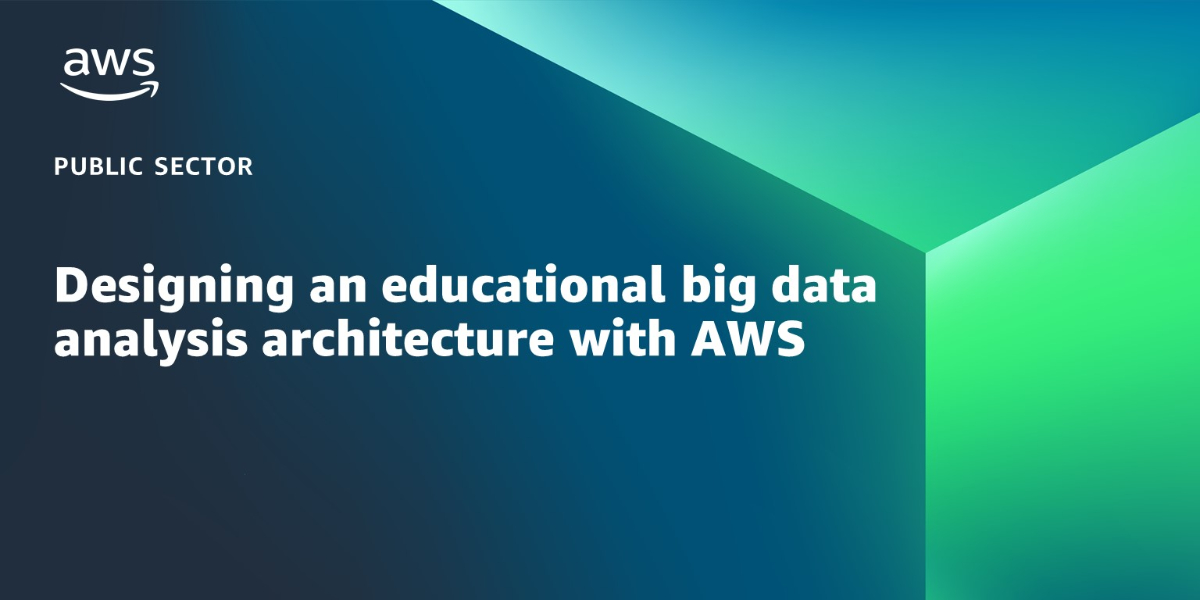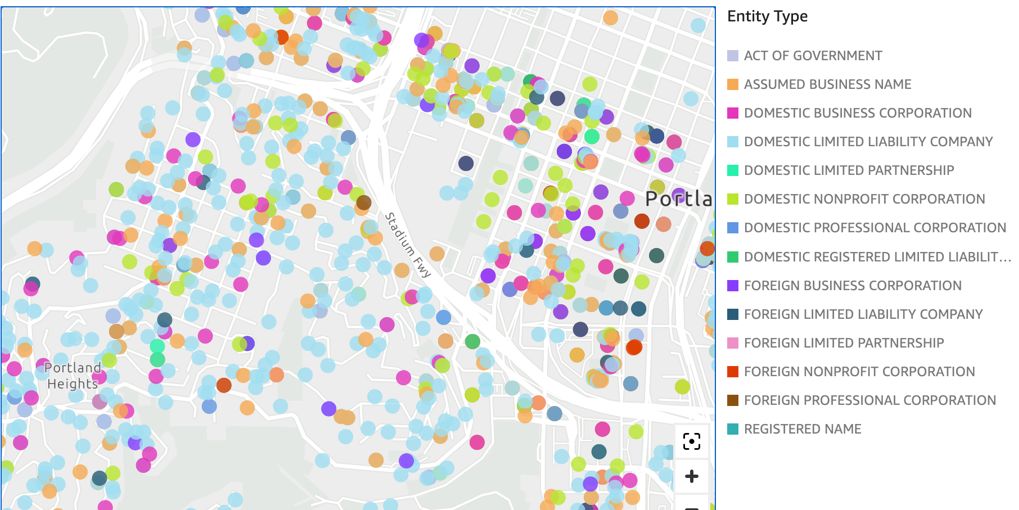AWS Public Sector Blog
Tag: Amazon Athena
Supporting health equity with data insights and visualizations using AWS
In this guest post, Ajay K. Gupta, co-founder and chief executive officer (CEO) of HSR.health, explains how healthcare technology (HealthTech) nonprofit HSR.health uses geospatial artificial intelligence and AWS to develop solutions that support improvements in healthcare and health equity around the world.
Analyzing vehicle fleet location data from a data lake with AWS
At AWS, many public sector customers operate fleets of vehicles (e.g. emergency response, public transportation) that generate location data, which is ultimately stored in a data lake. These customers frequently ask how they can quickly visualize this data and extract insights that can help them optimize how they operate their vehicle fleets. In this post, learn how to use Amazon Athena and Amazon Location Service to perform ad hoc reverse geocoding on a notional dataset of vehicle location history, and visualize the results on an Amazon QuickSight map.
Designing an educational big data analysis architecture with AWS
In this blog post, learn a high-level architecture, built on AWS, that uses a graph database to analyze unstructured and structured educational data that can, for example, help inform a recommendation to a student for the appropriate courses to take in their next semester based on multiple personalized data factors.
Visualize data lake address datasets on a map with Amazon Athena and Amazon Location Service geocoding
Many public sector customers in government, healthcare, and life sciences have data lakes that contain addresses (e.g., 123 Main Street). These customers frequently ask how they can quickly visualize these addresses on a geographic map to get a more intuitive understanding of how these addresses are distributed. In this post, learn how to use Amazon Athena and Amazon Location Service to perform ad hoc geocoding on an example dataset and visualize these geocoded addresses on an Amazon QuickSight map.
How to create a cybersecurity analytics platform with AWS analytics and machine learning
Cybersecurity analytics is a systematic methodology designed to collect, ingest, process, aggregate, and analyze security events. This methodology empowers organizations to proactively perform security investigations, powered by advanced analytics and machine learning (ML), which help mitigate cyber issues more effectively and efficiently at scale. Learn about the core components of a cybersecurity analytics framework and how organizations can use AWS to design a cybersecurity analytics platform with analytics and ML services.
Citi Logik helps governments drive action on transportation insights with AWS
Citi Logik is a UK-based government technology (GovTech) company and AWS Partner with Amazon Web Services (AWS). Citi Logik uses AWS to enhance anonymised raw mobile network data (MND) so organisations can identify trends in the flow of people across a variety of different transportation modes. Citi Logik provides their customers, including the West Yorkshire Combined Authority and Wiltshire County Council, with valuable insights to help them make informed decisions about future transportation planning and urban planning development.
Building a resilient and scalable clinical genomics analysis pipeline with AWS
At the Baylor College of Medicine Human Genome Sequencing Center (BCM HGSC), we aim to advance precision medicine and research in genomics. In that effort, we joined the ambitious All of Us Research Program funded by the National Institutes of Health (NIH) to help deliver genomic data to over one million individuals across the United States. In early 2019, we estimated that processing whole genome samples for this megaproject would imply a scale-up of over four times the production workload of our center. We used AWS to support our new pipeline demands, which saved time, reduced costs, and created new opportunities for future development.
How researchers at UC Davis support the swine industry with data analytics on AWS
A research team led by Dr. Beatriz Martinez Lopez at UC Davis supports pig farmers with a data analytics platform that aggregates and analyzes animal health data to diagnose animal viruses and diseases. But this platform was primarily designed for analysts and data scientists. To truly transform animal disease management, Martinez-Lopez wants to put this data analytics tool into the hands of farmers around the world. So the research team is using the scalable, cost-effective tools of the AWS Cloud, along with a research grant letter of support from AWS, to make this optimized platform a reality.
Street-scale global maps, orca sounds, and COVID-19 detection data: The latest open data on AWS
The AWS Open Data Sponsorship Program makes high-value, cloud-optimized datasets publicly available on AWS. We work with data providers to democratize access to data by making it available to the public for analysis on AWS; to develop new cloud-native techniques, formats, and tools that lower the cost of working with data; and to encourage the development of communities that benefit from access to shared datasets. This quarter, we released 19 new or updated datasets like validated OpenStreetMap data, bioacoustic data, COVID-19 detection data, and more.
How to build secure data lakes to accelerate your nonprofit’s mission
Using data lakes, nonprofits can use data to influence strategy and inform decisions that produce value and impact. In this post, learn how to build a data lake, ingest data from a PostgreSQL server, give permissions to users to consume the data using AWS Lake Formation, and access and analyze the data using Amazon Athena.









